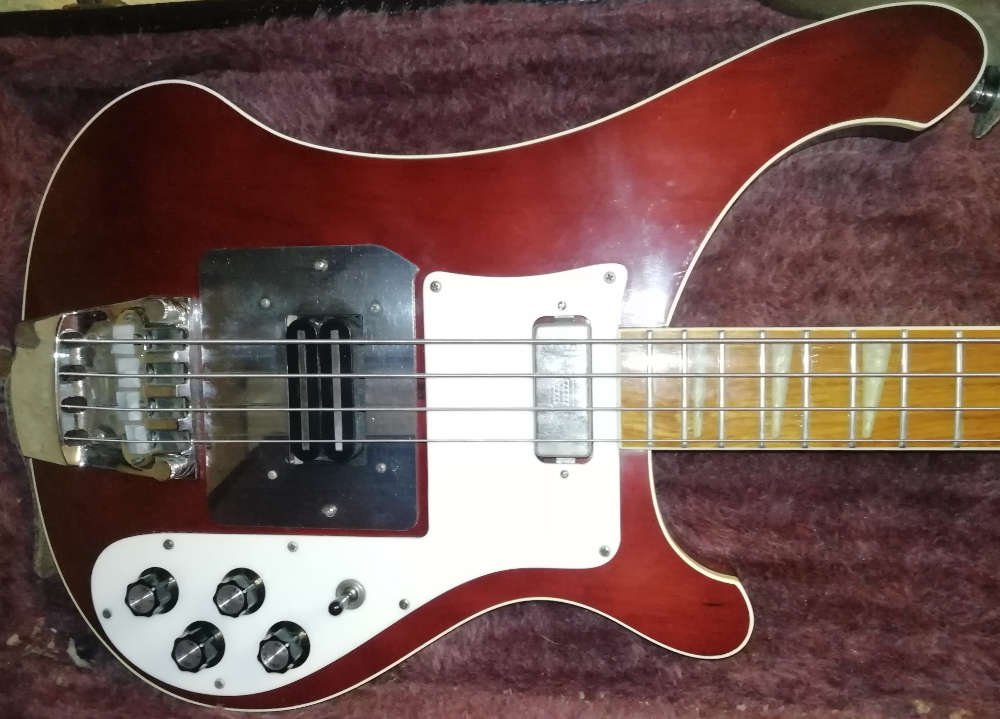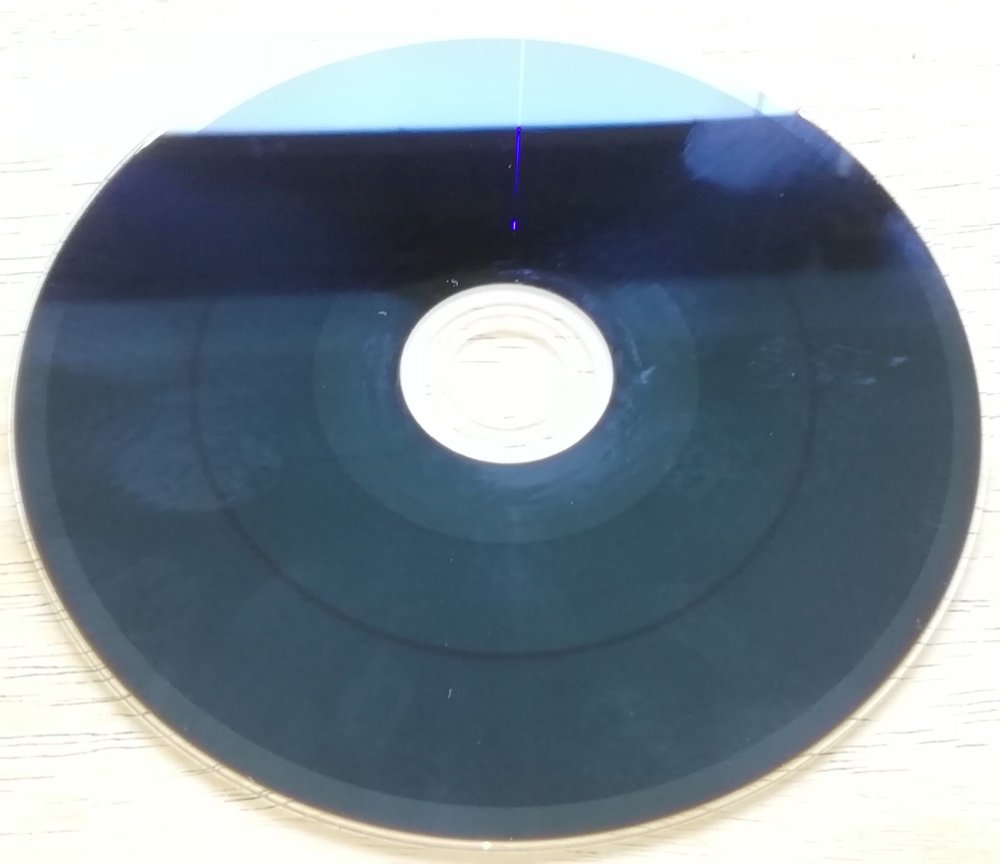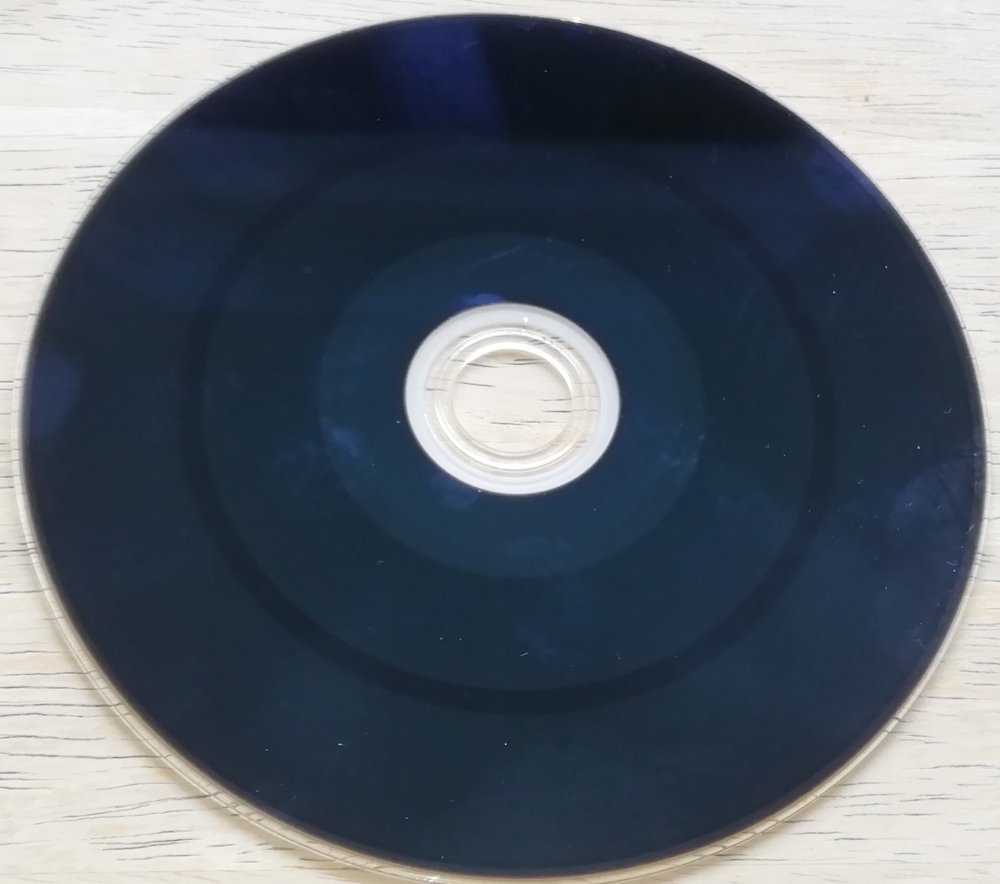-
Posts
14 -
Joined
-
Last visited
Content Type
Profiles
Forums
Events
Everything posted by Bassthang
-
I've just re-read the earlier posts in this thread to try and get my head round it all. So it looks like there are NO "good" discs that are being sold here. If I lived in the USA I could get the proper Verbatim ones, but I'm stuck here on Brexit Island where Verbatim won't even honour their guarantee. Apparently even the "M-disc" BDRs are not true M-disc technology but just a branding exercise to extract more money from the punters. What a ridiculous situation! I was very pleased with BDR as an archive solution, but the manufacturers have scuppered the medium's prospects. So far, the Mediarange discs have all worked well.
-
That's why I bought the Verbatims, because the first batch I bought were HTL (as far as I know). I started to think that these newer ones from CMC were LTH though. It's so hard to tell. I had read somewhere that any discs that are LTH have to say so on the packaging, and that if it doesn't say one or the other it still means it's HTL. There's a question about identifying whether a disc is HTL or LTH on StackExchange and someone said that it's easy to check with ImgBurn - just scroll down the device list with a disc inserted and it's right there. So I've checked my newer Verbatims (those that caused the problems) and they are coming up as HTL. So are the new MediaRange discs. Phew!
-
It's been a while, but I've had a break in the "sadmin" and other urgent tasks and I so had a chance to revisit the problem. I have some good news! Firstly, thanks go out to dbminter for finding the link to the firmware update for my Samsung burner. I've applied it, and it's made all the difference! I was sceptical at first, but what persuaded me to try it was reading an article about the original Verbatim discs being HTL and the new ones apparently being LTH. Some drives weren't able to write LTH discs without an update. It looks like my Samsung was one of those. Since doing that, I've had almost 100% success with the same discs. I say "almost" because I lost two discs due to other, unconnected hardware problems (and me being too tired to check things properly). I'm so glad that I don't have to cough up more money to get a new burner, although I might get the internal Pioneer drive later on as an alternative, when I have funds available. Secondly, I'm trying a new brand of disc: Mediarange. I can't remember exactly, but I think I read that these were HTL discs. The second burn with these discs is ongoing as I write this. So far, so good. . . Thirdly, I'd like to say how much better ImgBurn is than some of the alternatives! Yes, it can be a bit fiddly sometimes, but with ImgBurn I can see what's going to happen before I commit to a burn and adjust the process. I gave up with Nero years ago when they dumbed it down and took away most of the controls that I was used to. Ditto Roxio. This was all brought into sharp relief when I tried burning a BDR on a Mac this week. This was because my band's album projects were created on a Mac and backed-up to an Apple-formatted HDD. I use Windows, but I had been given a Mac tower to run Pro Tools on, so it made sense to copy the backed-up projects to this machine. (We'd tried backing up to exfat discs before - all the band members use Windows PCs - but gave up when three backup HDDs failed completely at about the same time. I have a suspicion that HDDs don't like being written to by Macs when formatted as exfat. And to reinforce this, I had a HDD fail this week when I formatted it as exfat and tried to burn a disc on my Windows laptop, using this HDD as source. The HDD failed during the burn.) Apple fans always tell me how great the Apple way of doing things is. "It just works" is something I hear a lot. But trying to burn a disc using MacOS is a frustrating, infuriating, messy and often unsuccessful process. Yes, it's nice to just drag and drop items, but sometimes the whole folder gets copied to the burn window (as it should), sometimes only a single file. I'm sure there are some hotkeys to better control this behaviour, but I haven't found them yet, so it takes several attempts to drag a few folders over. In the end I decided to copy all the project files onto an exfat HDD, plug that into my Windows laptop, copy them onto my laptop's HDD and then use ImgBurn to do the work. Give me ImgBurn every time!!!! (To be fair, a lot of this is probably just because I'm unfamiliar with the Mac. I have a book called "Switching to the Mac" which is written specially for Windows users to acclimatise themselves to the strange world of Apple. I haven't found the time to work through it yet, but soon. . .)
-
Thanks for your thoughts on the formats and longevity. I've recently read some old CDs that were written in the 90s and they seem OK, so I reckon your findings are spot-on. I also tend to copy files from my older archive CDs to new DVDs every few years, just in case. I'd rather have 2 or 3 copies of a file than none! DVD is not an option for some of my data, though. We're talking multi-track audio (Pro Tools and the like) from home recording projects and backups of my band's professional studio projects (which can be huge) so a single project would have to be split across dozens of DVDs. Not ideal. Likewise, my partner's digital photos (which I'm currently sifting though) take up a lot of space. It's such a shame that the BDR format seems to have been nobbled and sidelined by the manufacturers. I rather liked the ability to treat them simply as "bigger DVDs". This keeps happening in the history of technology - I remember investing in Mini-discs in the 90s. They worked well for recording audio, but that technology was hamstrung by the manufacturer's paranoia about copying and digital rights management. If they'd allowed them to be used as data stores too, they might have caught on. The WinXP machine is my Music PC, running Pro Tools and older software like Cubase and some vintage Adobe products (I now use Affinity on my laptop for my art and design, but sometimes it's quicker to just go back to a simpler Adobe tool to do some jobs). It doesn't connect to the Internet any more, nor is it used for day-to-day tasks. It's also where I run my old PC games (Doom, Quake, Unreal, Half-life and so on). I like it just the way it is - what a breath of fresh air it is to use XP after faffing around with Win10! I do have some Linux PCs too (still trying to decide which distro is best for me), and I now have the use of my late partner's Mac laptop, so I have a lot more options. I'll report back on the firmware, discs and
-
Thanks for the info. I'll look into your drive recommendations. Are there any UK or European members reading this who can recommend any disc brands available here? Or, conversely, are any UK members happy with the quality of the current Verbatim BDR stock? (I suppose I could opt to use the more expensive M-disc for the really important archives. . .)
-
Sorry for the delay in this update, but I've been distracted by a slowly-unfolding family tragedy over the last year or so. That situation has now resolved itself, but I'm now a single parent on low income, so there are still tough times ahead. . . Anyway, I'm now able to return to the issue (for a while - until the next catastrophe arrives). I did do some tests a few months ago. I found that my existing drive works perfectly well with some Verbatim BDRWs that I have. These discs were bought at the same time as my writer and the first batch of Verbatim BDRs. But if I try to write the same files on the same writer to one of the new Verbatim BDRs - problems again. I had the same results with both my Win10 laptop and a WinXP tower. All this suggests that - firmware update aside - it is not the writer or the host system that is at fault. It all points to the discs. I'll try the firmware update anyway (thanks for the link, DBMinter). If this doesn't help, then the options are to buy a new writer (as suggested) or try different brands of disc. The problem is that whenever I look into any brand online, I see positive reviews alongside reviews that talk about 50%+ failure rates. So my question for the team is this: which BDR discs currently available in the UK ARE reliable? What are you guys using?
-
This is the nearest I can find to the issues I remember: https://www.electronicspoint.com/forums/threads/cd-r-w-drive-spindle-clamp-magnet-catastrophic-failure.61054/ I've also been onto Samsung's support pages and got the address for their optical drive support dept. (I had to ask a chat operator). I'll see what they have to say about firmware.
-
Full-size internal CD, DVD and bluray drives with trays used to clamp the disc. The clamps had magnets to hold them together. There used to be lots of problems with the strength of those magnets varying over time (I think they often became stronger) and the drives not holding (or not releasing) the discs and jamming up. I can't find anything online about this now, but a few years ago it was definitely a thing. You could find articles explaining how to put small shims inside to increase the gap and reduce the magnet's effect. I remember doing it a couple of times, but it only worked for a while. Odd that I can't find those articles now!
-
Thanks for the suggestions. I hope it's not the drive! This has been the most reliable writer I've ever had. It's a USB-connected Samsung SE-506. What I like about it is that, being a slimline drive, it doesn't suffer from that problem where the magnets that clamp the disc in place change strength with time, rendering the whole unit useless. The disc is simply held by some spring-loaded bearings. Or is that issue a thing of the past now? From your post, it would seem that there are problems with just about every system. This is an awful state of affairs. You mention updating firmware. Is this something that needs to be done when new discs come to market, or just when new features are available? I vaguely recall seeing mentions somewhere of having to update drives to use different media. Perhaps that's what my problem is. After all, these are different and newer discs to those that the drive worked well with.
-
Update. . . I've been off doing other things for a while, but tonight I got back onto burning BDRs. Same cake of discs. So far, awful results! However, I'm not 100% sure it's just a bad batch of discs. Because of the nature of the files, this next disc had to be UDF. Partway through writing the disc, it all went quiet. I checked IMGBURN and saw a report at the foot of the screen about waiting for the HDD threshold. Sure enough, Windows Task Manager showed 100% HDD activity, with "System" being at the top. I killed some update processes (which shouldn't even be running, as I opted to stop updates for a few weeks), and the HDD went down to a decent level. IMGBURN kicked back into life again. This happened a few times during a very long write process. The Verify process was also slow, and about 1/4 way through started producing read errors. Although IMGBURN offers to ignore the errors after a while, there were so many (>138 so far - it's still running. . .) that the verify process may take hours. I'll probably just give up. Looks like I've got a coaster. . . Some background: this is a Dell Inspiron laptop which came with Win10, which has given me some grief for quite a while. It was great when I first had it, but a couple of Windows updates along, it went very slow. It had a complete wipe and clean re-install which seemed to help for a bit, but a few months after that it was slow again. Worse than that, it often just locks up with 100% HDD, often with Win update processes hogging it all, or sometimes just System. Sometimes the machine runs well. But - usually at weekends - it goes into this spiral of degrading performance, eventually becoming useless for a few hours while it's doing "something". I have to go off and do something else until it feels like working for me again. I used to blame MS for their rubbish OS, but I have an older (also Dell) laptop that runs Win10 perfectly well. So I'm guessing that Dell have just built a lemon this time round. BUT on the other hand, this is the same machine, same USB drive and the same IMGBURN that quite happily burned scores of BDRs for me a couple of years ago, so maybe it is just poor quality discs. I think I'll fire off a complaint to Verbatim - what's the point of even selling these discs if more than half of them are not going to work?
-
Thanks for the quick response, dbminter. Much appreciated. Sorry for the delay in replying, but it's been a rollercoaster few days here, and I'm just catching up on things. . . That's reassuring about those rings. I've never seen those before (on Verbatim or other media), so I was worried for a while. I'm in England. I used to buy my BDRs from Scan, but I bought this last cake from Amazon to save a bit of money (free delivery). If CMC make the worst optical discs out there, then that implies there are better discs to be had. Which manufacturers do people on this forum recommend? Or is it a case of sticking with Verbatim and checking very carefully that they are home-grown Verbatim discs rather than outsourced CMC discs? Perhaps order them from a supplier in the USA? Sorry if I've misunderstood, but I'm still getting to grips with this very unclear situation. This is rather like the situation I remember a couple of years ago, when I was getting concerned about whether the current Verbatim discs were HTL or LTH (as I'd heard that some were HTL and others LTH - and there being almost no way of knowing) and writing to Verbatim's support to ask the question. I was reassured that all their discs now used the inorganic HTL. I thought that from then on I could relax and just re-order Verbatim discs in future. I never thought that they'd flog the whole system off to another (lower-quality) supplier. How on earth did it come to this? What do IT professionals use these days for their archiving? (I used to be an IT support person, but left the industry in 2010, so I'm mostly out of touch.) I suppose it would have to be M-disc. I might resort to buying some of these for the most important files (recording session multi-track backups, which these days can run into tens of GB per song).
-
I've used IMGBurn for years to write archive discs - mostly of my music files (multi-track projects in Pro Tools and Cubase, WAVs and MP3s). It's rarely caused any problems (apart from understanding how to do certain things in IMGBurn). I've used Verbatim BDRs consistently for many years. I recently ordered a new cake of Verbatim Datalife BDRs and used some to burn discs of some music projects (files only) on my WinXP PC. No problems. Then I moved to my Win10 laptop and did a BDR of some large video files. (I don't normally do this - I just copy my video files to a HDD. But I thought while I had the writer out I should give it a try.) One file was >4GB so I was prompted to use UDF format. I found that option and set it up. IMGBurn also kept telling me that it wanted to change the format as it detected a video file in the root, so to ensure it just did a file backup I put all the files into a folder, so nothing was loose in the root. It's supposed to be a backup disc, not a playable disc. The job ran and completed successfully. However, Win10 wouldn't read back the disc. I was surprised, as I can't really recall the last time I had a disc fail that wasn't due to something I did wrong. Both machines used the same USB laptop-style Samsung Blu-ray writer (which is the best media writer I've ever used). ALL the discs I've written from this new pack are a bit weird - I can see dark rings on the disc surfaces which look to me like some sort of write failure (not merely where the write ended - all discs were pretty much full). Photos attached of the bad disc and one of the "good" discs - all from the same batch. I don't see these rings on discs made using previous batches of Verbatim BDR. The possibilities are: 1) I haven't correctly used IMGBurn for this format of disc (likely). 2) Windows10 has problems with reading UDF discs (I haven't yet tried it on other machines: I have WinXP, Win7, and Linux PCs to try it with, and I can borrow a Mac) 3) The new Verbatim discs are a bad batch, but the problems are only showing up (so far. . .) on the UDF formatted job. 4) Those "W 23:23:04 Device Arrival Detected!" lines in the log look like the connection to the USB drive might have been intermittent? I''d have expected this to kill the ongoing job though. . . I really hope it's not (3)!!!! I've just spotted a thread in this forum saying that Verbatim sold their process to another company that already has a reputation for producing poor quality discs. I'm not too bothered about the video files (although a bit annoyed that for the first time in ages I've ended up with a coaster), but I'm starting to worry about the long-term reliability of the music project discs. If the Verbatim discs are now poor quality, which brand of discs do forum members recommend? I can't afford to buy MDISC! Log file of the failed job (note that the job itself was successful): ; //****************************************\\ ; ImgBurn Version 2.5.8.0 - Log ; Saturday, 09 April 2022, 23:34:40 ; \\****************************************// ; ; I 22:58:41 ImgBurn Version 2.5.8.0 started! I 22:58:41 Microsoft Windows 8 Core x64 Edition (6.2, Build 9200) I 22:58:41 Total Physical Memory: 4,057,340 KiB - Available: 653,060 KiB I 22:58:41 Initialising SPTI... I 22:58:41 Searching for SCSI / ATAPI devices... I 22:58:44 -> Drive 1 - Info: TSSTcorp BDDVDW SE-506CB TS01 (D:) (USB 2.0) I 22:58:44 Found 1 BD-RE XL! I 23:02:07 Operation Started! I 23:02:07 Building Image Tree... I 23:02:07 Checking Directory Depth... I 23:02:07 Calculating Totals... I 23:02:07 Preparing Image... E 23:02:07 File size exceeds the limit imposed by the ISO9660 file system. E 23:02:07 Name: [filename removed from log] E 23:02:07 Size: 4,528,493,937 bytes E 23:02:20 Operation Failed! - Duration: 00:00:13 I 23:02:39 Operation Started! I 23:02:39 Building Image Tree... I 23:02:39 Calculating Totals... I 23:02:39 Preparing Image... I 23:02:39 Contents: 7 Files, 1 Folder I 23:02:39 Content Type: Data I 23:02:39 Data Type: MODE1/2048 I 23:02:39 File System(s): UDF (1.02) I 23:02:39 Volume Label: [Not Configured] I 23:02:39 Size: 24,837,447,428 bytes I 23:02:39 Sectors: 12,127,663 I 23:02:39 Image Size: 24,838,012,928 bytes I 23:02:39 Image Sectors: 12,127,936 I 23:02:39 Operation Successfully Completed! - Duration: 00:00:00 I 23:02:45 Operation Started! I 23:02:45 Building Image Tree... I 23:03:01 Calculating Totals... I 23:03:01 Preparing Image... I 23:03:01 Contents: 7 Files, 1 Folder I 23:03:01 Content Type: Data I 23:03:01 Data Type: MODE1/2048 I 23:03:01 File System(s): UDF (1.02) I 23:03:01 Volume Label: Films and TV 1 I 23:03:01 Size: 24,837,447,428 bytes I 23:03:01 Sectors: 12,127,663 I 23:03:01 Image Size: 24,838,012,928 bytes I 23:03:01 Image Sectors: 12,127,936 I 23:03:08 Operation Successfully Completed! - Duration: 00:00:23 I 23:03:08 Operation Started! I 23:03:08 Source File: -==/\/[BUILD IMAGE]\/\==- I 23:03:08 Source File Sectors: 12,127,936 (MODE1/2048) I 23:03:08 Source File Size: 24,838,012,928 bytes I 23:03:08 Source File Volume Identifier: Films and TV 1 I 23:03:08 Source File Volume Set Identifier: 5489B85600B90EBD I 23:03:08 Source File Application Identifier: ImgBurn v2.5.8.0 I 23:03:08 Source File Implementation Identifier: ImgBurn I 23:03:08 Source File File System(s): UDF (1.02) I 23:03:08 Destination Device: [0:0:0] TSSTcorp BDDVDW SE-506CB TS01 (D:) (USB) I 23:03:08 Destination Media Type: BD-R (Disc ID: CMCMAG-BA5-000) I 23:03:08 Destination Media Supported Write Speeds: 2x, 4x, 6x I 23:03:08 Destination Media Sectors: 12,219,392 I 23:03:08 Write Mode: BD I 23:03:08 Write Type: DAO I 23:03:08 Write Speed: 2x I 23:03:08 Hardware Defect Management Active: No I 23:03:08 BD-R Verify Not Required: Yes I 23:03:08 Link Size: Auto I 23:03:08 Lock Volume: Yes I 23:03:08 Test Mode: No I 23:03:08 OPC: No I 23:03:08 BURN-Proof: Enabled I 23:03:08 Write Speed Successfully Set! - Effective: 8,992 KB/s (2x) I 23:04:08 Filling Buffer... (80 MiB) I 23:04:11 Writing LeadIn... I 23:04:30 Writing Session 1 of 1... (1 Track, LBA: 0 - 12127935) I 23:04:30 Writing Track 1 of 1... (MODE1/2048, LBA: 0 - 12127935) W 23:23:04 Device Arrival Detected! W 23:23:04 The device list will be refreshed at the next available opportunity. W 23:23:47 Device Arrival Detected! W 23:23:47 The device list will be refreshed at the next available opportunity. I 23:30:10 Synchronising Cache... I 23:30:19 Closing Track... I 23:30:20 Finalising Disc... I 23:31:39 Exporting Graph Data... I 23:31:40 Graph Data File: C:\Users\[username removed from log]\AppData\Roaming\ImgBurn\Graph Data Files\TSSTcorp_BDDVDW_SE-506CB_TS01_09-APRIL-2022_23-03_CMCMAG-BA5-000_2x.ibg I 23:31:40 Export Successfully Completed! I 23:31:40 Operation Successfully Completed! - Duration: 00:28:31 I 23:31:40 Average Write Rate: 15,760 KiB/s (3.6x) - Maximum Write Rate: 26,946 KiB/s (6.1x) I 23:31:43 Searching for SCSI / ATAPI devices... I 23:31:49 -> Drive 1 - Info: TSSTcorp BDDVDW SE-506CB TS01 (D:) (USB 2.0) I 23:31:49 Found 1 BD-RE XL! I 23:34:38 Close Request Acknowledged I 23:34:38 Closing Down... I 23:34:38 Shutting down SPTI... I 23:34:39 ImgBurn closed!




